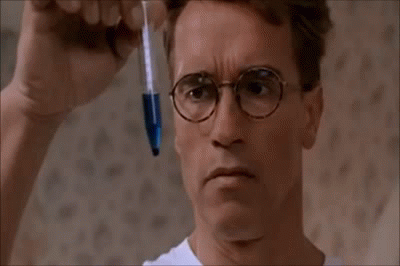I’m a big fan of breasts and babies, and a big fan of words, and I’m a big fan of figuring out the right words to use in regard to breastfeeding. When I hear a particularly poignant turn of phrase or piece together words just right, that lightbulb moment is truly electric. Then there are some that feel like I’ve whizzed on an electric fence.
There are some phrases we use to talk about breastfeeding that I would like to see struck from the lexicon. Today I’m reminded of one of those: “Breastfeeding shouldn’t hurt.” Sometimes this is said more emphatically: “It should never hurt to nurse.” or “If breastfeeding hurts something is wrong.” Considering that 80 to 90 percent of mothers experience some nipple soreness, a figure underscored by peer-to-peer chatter, putting forth the idea that any soreness, discomfort, or pain means something is wrong sends the message that the vast majority of mothers and their babies are no good at breastfeeding.
No wonder so many women give up due to nipple pain! No wonder so many of them say, “I wish someone would’ve told me that it would hurt”! In an effort to avoid discouraging moms before they start, or in an effort to get them to see professional lactation support as often and as soon as possible, we fail them in another way, but not letting them know what can be normal—including pain.
We all have a different interpretation of what constitutes pain, and simple vocabulary contributes to the hairiness of this topic. Some of those people who say, “Breastfeeding shouldn’t hurt” will follow that up with, “but you may feel discomfort.” Without a consistent guideline about what is “soreness,” or “discomfort,” or “pain,” how can we speak with such certainty about the quality of breastfeeding?
Not only do we all have different pain thresholds, but we all have different experiences and bodies. Hormones can have an effect on one’s pain levels. Whether one is experiencing mood fluctuations or mood disorders may play into how pain is perceived (if you’re anxious, for example, pain may seem simply overwhelming, or maybe your adrenaline levels are so high that it’s unnoticeable). Maybe you hate having your breasts or nipples touched. Maybe your breasts have figured prominently into your sex life (if you know what I mean). Maybe you’ve got eczema or experience vasospasms. There are as many possibilities as there are people with breasts.
Here’s the thing: Most of us have not used our nipples and breasts nearly around the clock before; there’s going to be an adjustment period, just in that regard. It also takes some practice for mom and baby to learn how to work together to breastfeed, especially in a culture that has had a falling out with breastfeeding. In the early days, because reasons*, there’s probably going to be a not-so-great latch or two or more. It can take just one not-wide-enough latch to damage a nipple and that sort of injury does not disappear overnight. It can take time for things to align: a nice, wide latch; positioning that works for everyone involved; the post-birth high and postpartum moods to level a bit; milk volume to increase; wounds to heal.
OF COURSE it’s important (so important!) to educate moms prenatally about positioning and latch to help get them off to the best start possible. OF COURSE it’s important to talk to a breastfeeding expert if there’s discomfort/soreness/pain beyond a tolerable level, or if it’s getting worse, or if it’s simply not getting better after some time (the amount of time that is varies depending upon who you ask, but seven to 10 days is very often cited). OF COURSE there are sometimes physical/structural things on either mom or baby’s end that need to be addressed. None of that changes if we acknowledge that, often, breastfeeding in the early days can involve some degree of discomfort.
Furthermore, the corollary to the statement that “breastfeeding shouldn’t hurt” is that “if it doesn’t hurt, you’re fine.” Pain is not the only litmus test of whether breastfeeding is going well or not. In all situations, the big picture should be considered.
In an ideal world and in an ideal situation, breastfeeding wouldn’t hurt, but I don’t live in an ideal world and most of the situations I find myself in are less than ideal in some way or another. (Your experience may be different, in which case I envy you.) We can’t expect mothers to measure up to the ideal when so few of us have the opportunity to experience it. The least we can do, then, is let them know that they’re not alone, their bodies are not broken, and a little professional guidance can go a long way.
*Like: It is relatively rare to have an unmedicated birth without interventions immediately postpartum that may interfere with breastfeeding. The breast crawl/laid-back breastfeeding/biological nurturing is not the norm. Lactation, despite often-good intentions, is still often very “managed.”


